As you wander through the forests, parks, and even your own backyard, have you ever caught sight of a brightly colored bird with a striking yellow chest?
These birds are not only a visual treat but also a symbol of nature’s beauty and diversity.
From the iconic Western Tanager to the lesser-known Blackburnian Warbler, the world is home to a vast array of avian species with yellow chests.
So, whether you’re a bird enthusiast, a nature lover, or simply curious about the feathered friends around you, join us as we explore 16 types of birds with yellow chests and uncover their unique traits and behaviors.
| Image | Name |
|---|---|
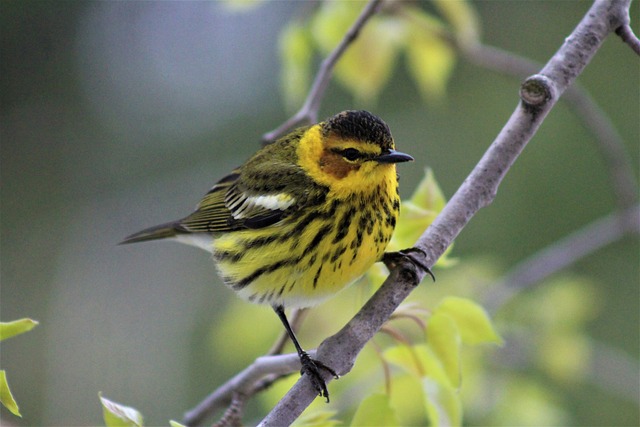 | Cape May Warbler |
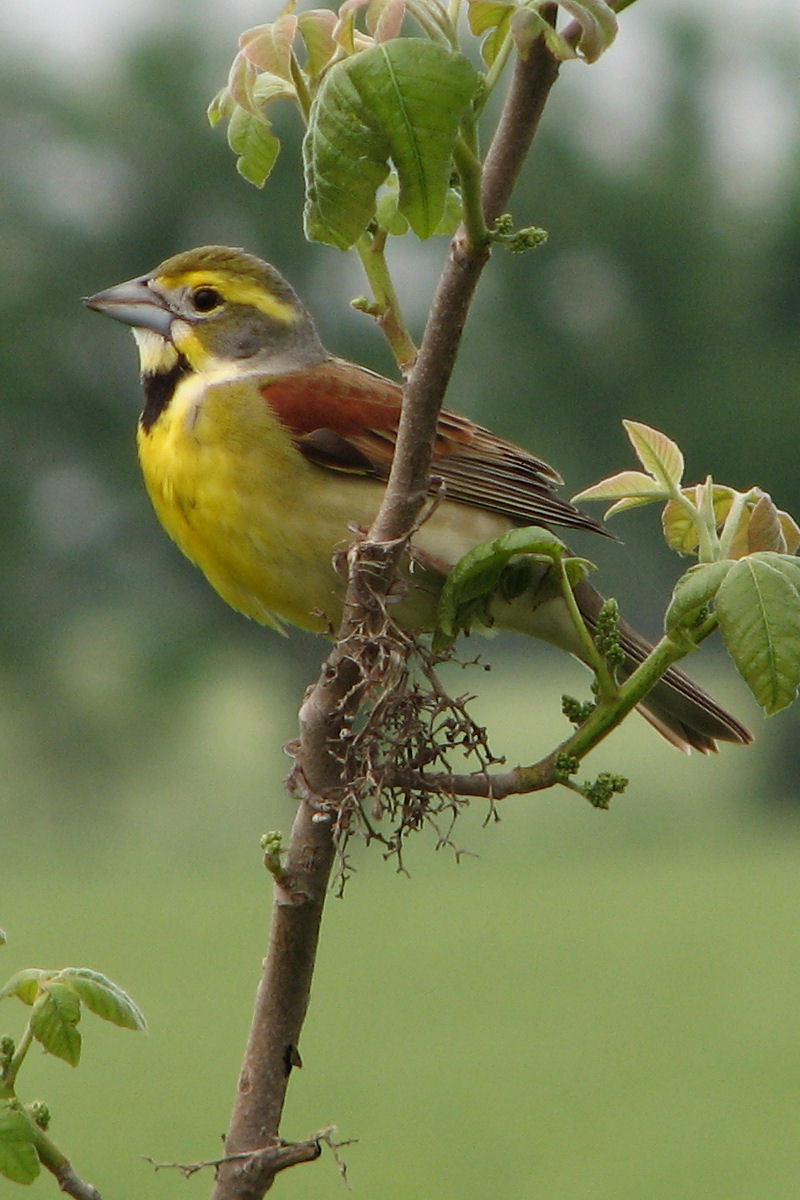 | Dickcissel |
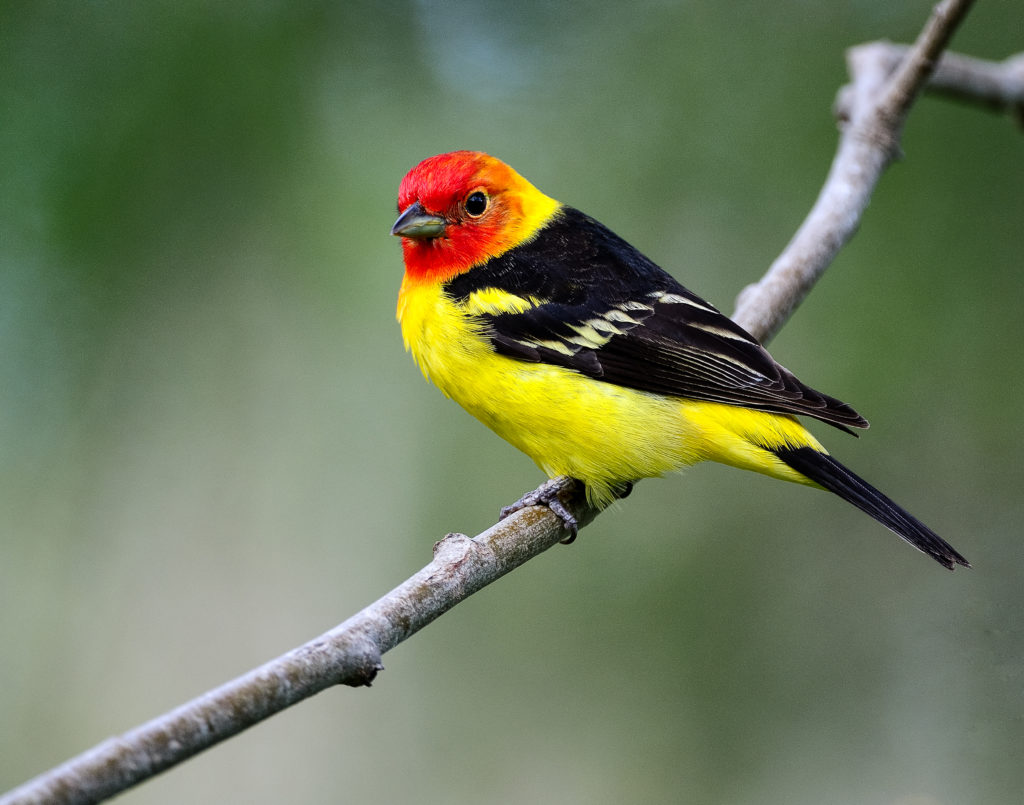 | Western Tanager |
 | Yellow-Breasted Fruit Dove |
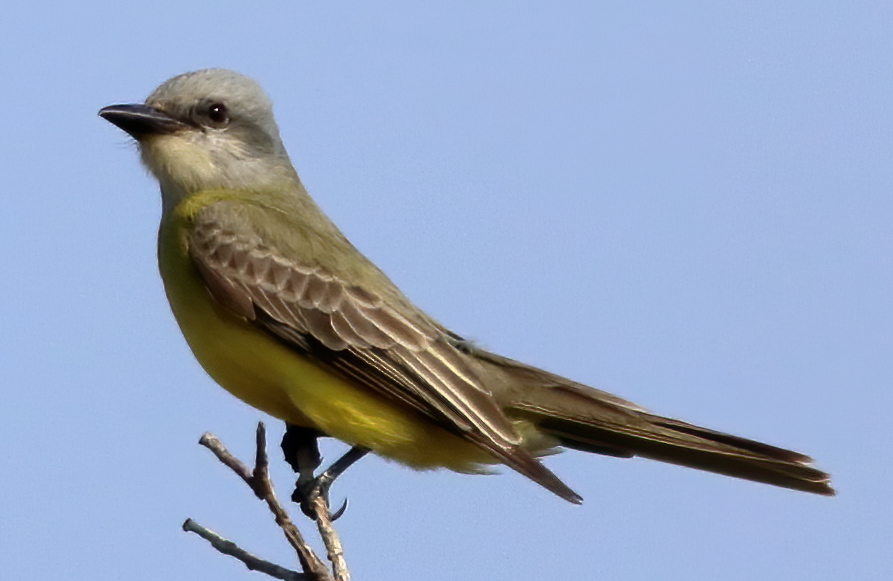 | Couch's Kingbird |
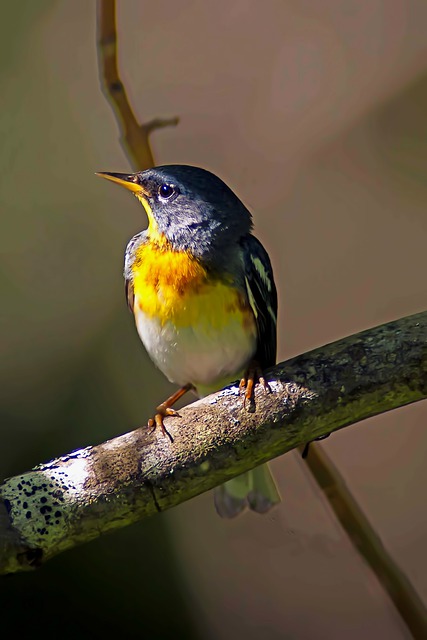 | Northern Parula |
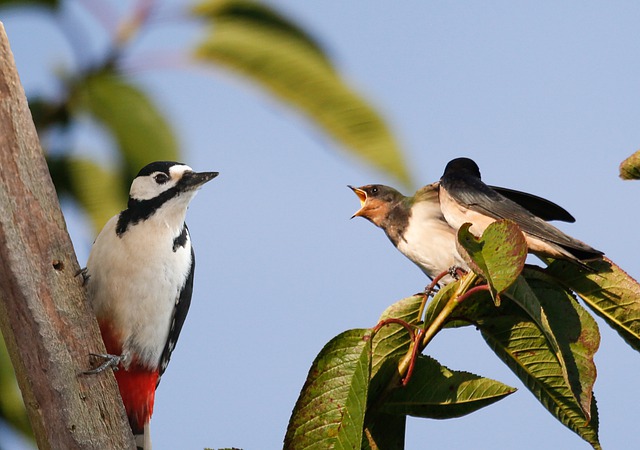 | Tree Swallow |
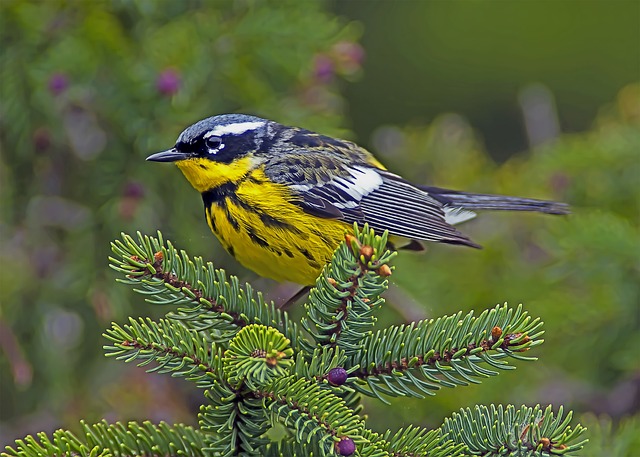 | Magnolia Warbler |
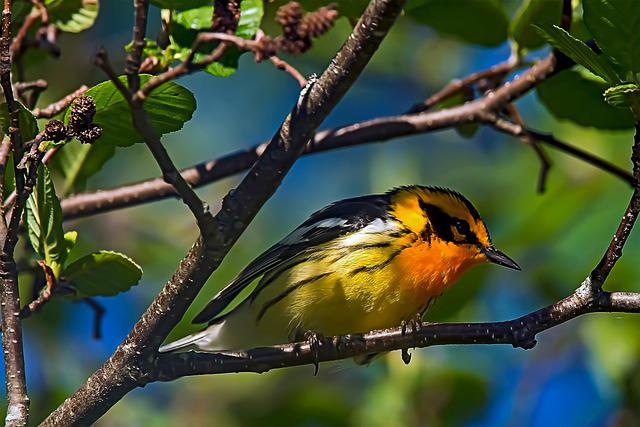 | Blackburnian Warbler |
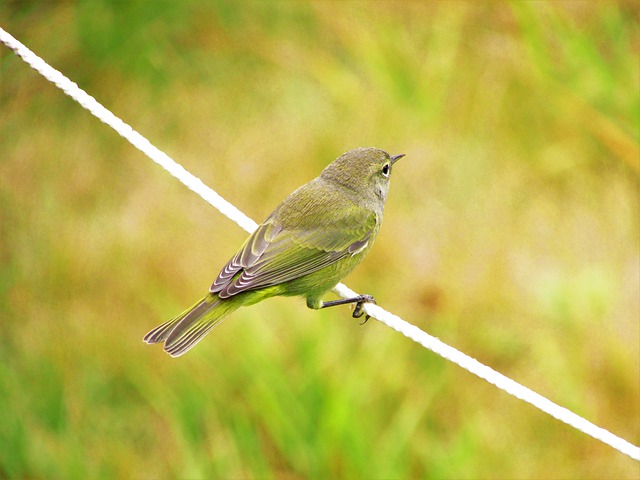 | Orange-crowned Warbler |
 | Wilson's Warbler |
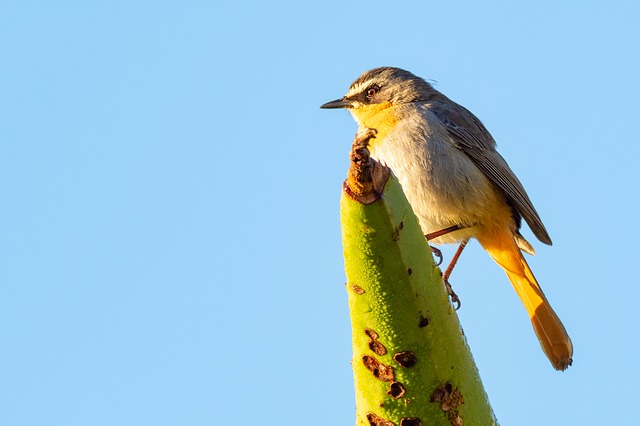 | Blue-Winged Warbler |
 | Nashville Warbler |
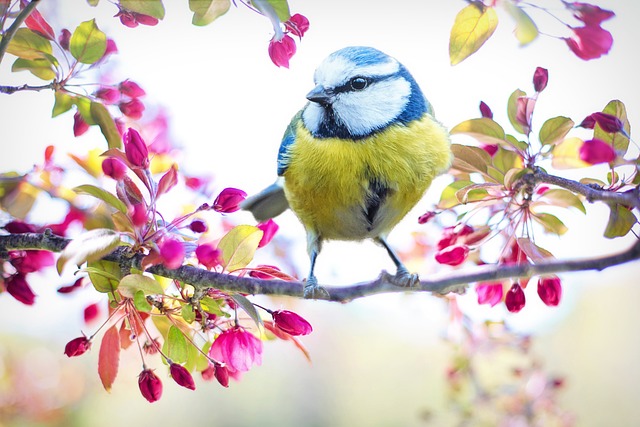 | Blue Tit |
 | Comma-breasted Grassquit |
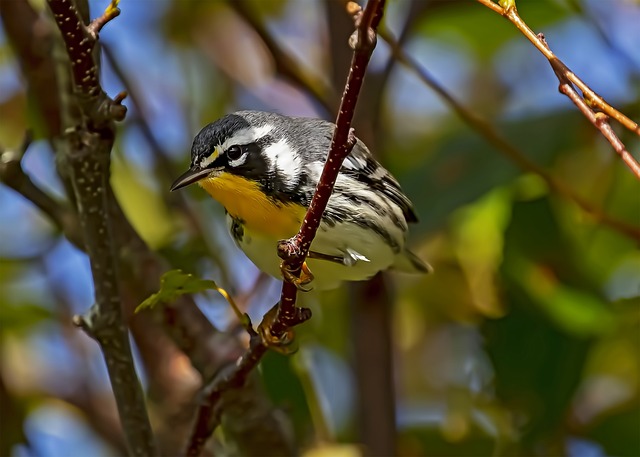 | Yellow-throated Warbler |
Types of Birds with Yellow Chests
1. Cape May Warbler

The breeding range of the Cape May Warbler includes Canada and the northern United States.
This warbler spends the colder months of the year in the southern parts of Central America.
In the spring and summer, you may see this songbird in its nesting grounds between Connecticut and Maine, and during winter, you can follow the Gulf Coast all the way down to the northern tip of South America.
Each autumn, millions of migrating birds pass through Texas en route to warmer climates farther north.
They also make occasional trips to Cuba, Florida, and Mexico. When the Cape May Warbler is rearing its young in the summertime, it predominantly consumes spiders and insects for food.
Sapsuckers are a common source of food as well since their holes in trees provide a tasty snack.
2. Dickcissel
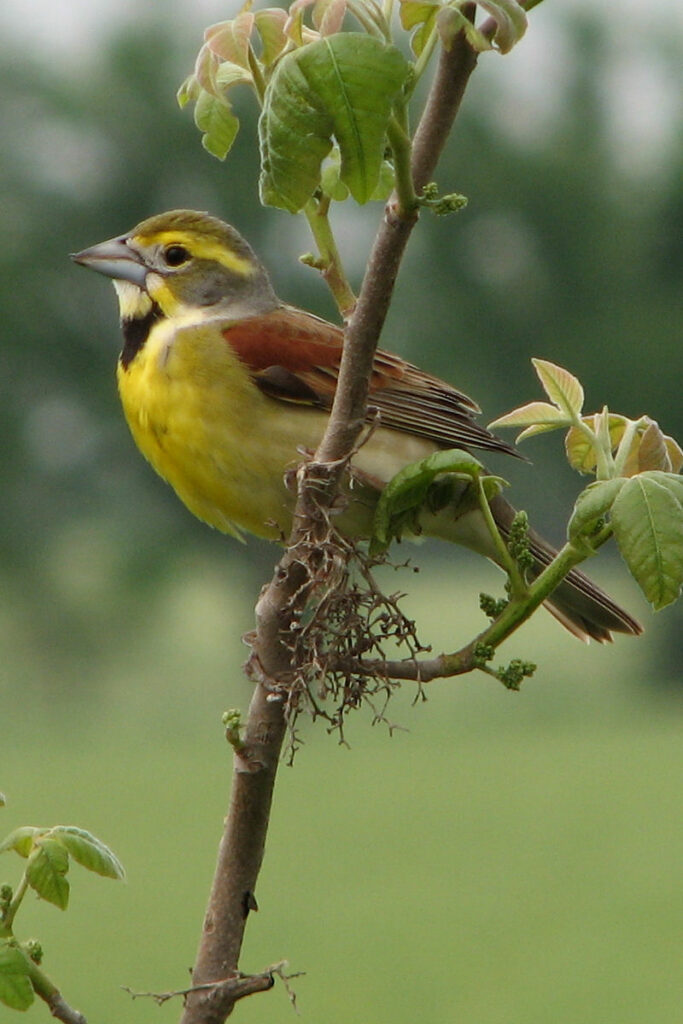
The Dickcissel is a bird native to the central and eastern United States of North America.
It prefers wet, open habitats like prairies and marshes but will also hang around in woods near water.
The head and face are gray, the wings and back are brown with black streaks, the neck is black, and the chest is yellow.
During the mating season, they frequent fields and other open environments, although they may be seen in gardens year-round.
They consume berries and other fruit, as well as spiders, insects, seeds, and other insects they find when foraging on the ground.
Among the most recognizable summertime noises is the dickcissel’s song.
During the mating season, dickcissels are monogamous, and their lifespan is around three years.
3. Western Tanager

The western tanager, while it goes by a different name, is really a cardinal and belongs to the family Cardinalidae.
Across the western half of the continent, from Mexico to Alaska, you may find them.
They are common in orchards, gardens, and riparian woods in addition to more typical locations such as mixed forests.
They may grow to be around 6.4 to 7.4 inches in length and have a wing span of about 11.6 inches.
Fruits are a small part of their diet; ants, wasps, beetles, and caterpillars make up the bulk of their food intake.
They, like other tanagers, gather food from tree branches and sometimes capture it in flight.
Males get their names from their distinctive black backs, red cheeks, and brilliant yellow abdomen and chests.
4. Yellow-Breasted Fruit Dove
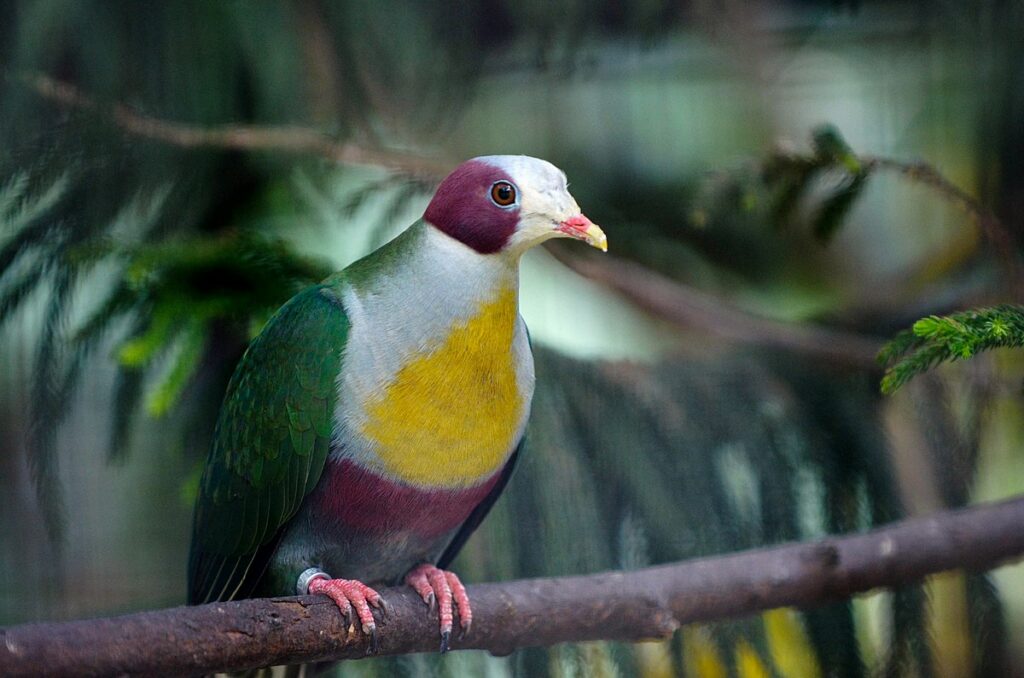
The yellow-breasted fruit dove, or balorinay, belongs to the family Columbidae, which also includes doves and pigeons.
These yellow-breasted doves are endemic to the Philippines, in contrast to the widespread distribution of fruit doves across Australia and Southeast Asia.
They prefer low-lying, damp tropical woodlands.
It is a medium-sized species, measuring around 9.5 to 10.5 inches in length, making it about the same size as other fruit doves.
The yellow-breasted fruit dove, like other species of fruit dove, relies heavily on a diet of fresh, locally grown berries and fruits.
For the time being, Philippine law provides protection for them from threats such as trapping, hunting, and the destruction of their natural habitat.
As its name suggests, their breast is a brilliant shade of yellow.
Their heads are striped white and red, and they have greenish wings, red abdomens, and silver shoulders and backs.
5. Couch’s Kingbird

Couch’s kingbird is a member of the Tyrannus genus of kingbirds, which is part of the Tyrannidae family of tyrant flycatchers.
These yellow-chested birds, named for ecologist Darius N. Couch, have a restricted range.
They are restricted to the area immediately next to the coast, which extends from Texas in the north to Guatemala, mostly in the south.
Within that range, their favored environments include human settlements, open fields, and woodland edges.
They have a length of around 8 inches, a disproportionately big head, and a forked tail. Similar to other flycatchers, they mostly subsist on insects, including grasshoppers, flies, and beetles, but they’ll also eat fruit and seeds if given a chance.
The bird’s plumage is a pale gray on their crowns and a muted greenish on their backs. As a result, they have brilliant yellow plumage on their belly and breast.
Many people mistake them for western kingbirds or the more widespread tropical kingbird, both of which are easily confused by their similar looks.
6. Northern Parula

Easily recognized by its blue-gray wings and back with magnificent blue patches, the Northern Parula also has vivid yellow chest feathers.
This little bird has a wide range, including the northern parts of South America, the eastern United States, Central America, Canada, and the southern United States.
It thrives in humid environments, such as at the borders of woods where trees are close to each other or beside bodies of water or in thick forest vegetation with many understory plants.
The northern parula’s diet consists mostly of fruit, insects, berries, spiders, and other tiny invertebrates.
7. Tree Swallow

The tree swallow, a tiny songbird that travels from Canada to Mexico, may be seen all over the eastern United States during the winter.
They like areas with plenty of water, such as marsh or stream edges, and hence choose mixed and coniferous woods as their home.
They have a greenish hue overall, but their chests and necks are yellow.
During migratory, these birds consume a variety of insects, nectar, fruit, and berries; however, during the breeding season, they eat mostly insect larvae and caterpillars, making them an essential predator of parasites such as gypsy moths.
8. Magnolia Warbler

Birds are known as Magnolia Warblers nest in Canada and the eastern United States during the winter.
It’s a little bird, white and black overall, with a bright orange-yellow chest and neck.
Small and brightly colored, these songbirds migrate to Florida each spring from their Central American wintering habitats to spend the spring and summer along the Gulf coasts and Atlantic.
Those lucky enough to live near a marshland or other water body welcome the return of these colorful beauties every spring.
The magnolia warbler feeds mostly on insects but also enjoys berry-rich trees and bushes.
Observe its location carefully if you come across one this spring; it will help you spot it again next year.
9. Blackburnian Warbler

The Blackburnian Warbler is a little songbird native to the New World.
Each sex has distinctive feathers, with the male’s white and black feathers accented by orange at the chest and neck and the female’s yellow.
Slugs, insects, spiders, berries, snails, and caterpillars make up a large portion of their diet, and they may be found frequently near deciduous woodlands.
The range of this bird’s breeding activity extends from Newfoundland to British Columbia in Canada to the southern states of Washington, Colorado, California, Oregon, and Pennsylvania.
Then spend the winter across Central America and Mexico, sometimes even as far south as Costa Rica, and they go up the United States Gulf Coast in the autumn.
10. Orange-crowned Warbler

The Orange-crowned Warbler, so named because of its distinctive orange headdress, is a tiny, colorful bird.
This warbler may have grayer or yellower feathers, depending on the lighting.
The orange-crowned warbler is widespread in North America and is most often seen in or near flowing water, such as a stream or creek.
They hunt for insects by swooping low over grass and foliage.
These birds like to nest in thickets of shrubs and other vegetation, although you could also see them in open areas, along the water, or in the woods.
They like to make their nests low to the ground so that predators can’t easily sneak up on their young.
11. Wilson’s Warbler
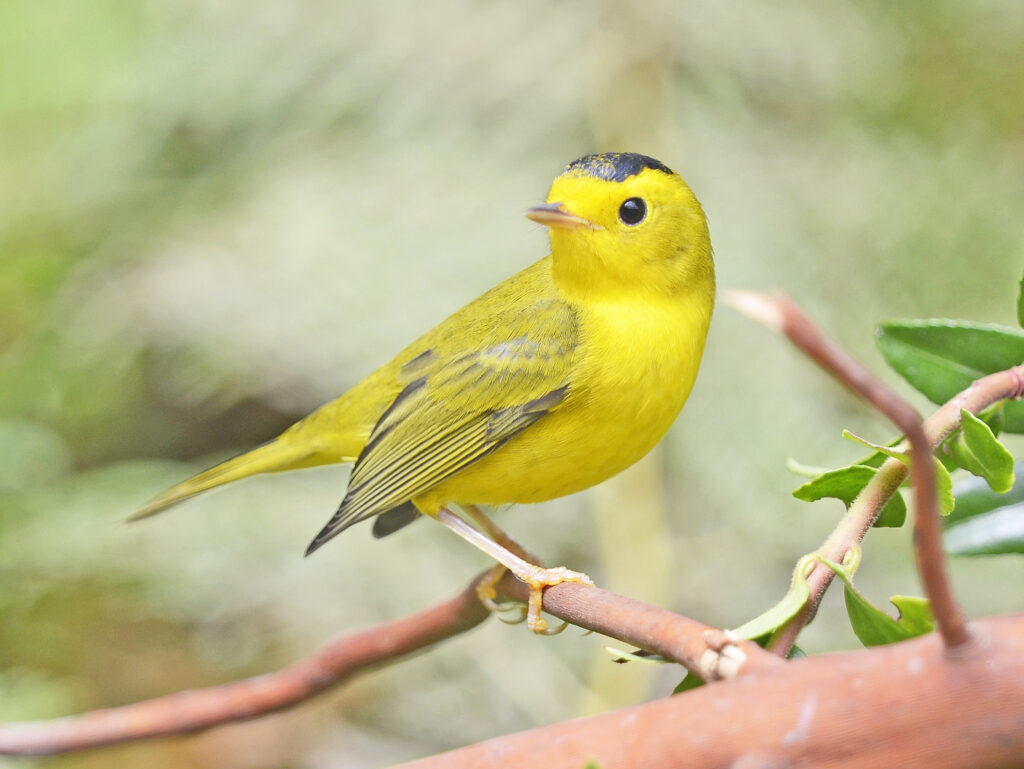
Wilson’s Warblers are little, yellow songbirds with greenish-yellow upper parts and white underparts.
A black patch on the male’s head is visible year-round.
These birds have strong sounds and songs they use to protect their territory.
You may see this bird in the states along the Gulf Coast from Connecticut to Florida and then west to Arkansas, Missouri, Texas, and Oklahoma.
Wilson’s Warblers mostly eat caterpillars and insects, which they locate by poking through mosses, dry leaves, tree limbs, and lichens.
12. Blue-Winged Warbler

Small yet beautiful, the blue-winged warbler may be heard singing all throughout North America.
The white wing bands and bluish-gray back are most apparent while the bird is flying away from you, contrasting with the brilliant yellow breast.
From Maine to Alaska and then south to Texas, California, Illinois, and Missouri, it nests in both the United States and Canada.
During the winter months, it may be seen in Argentina and Panama. Larvae, insects, spiders, and even some tiny seeds make up the bulk of their diet.
Although they thrive best in a woodland setting, they may also be found in suburban areas with sufficient foliage.
13. Nashville Warbler

The Nashville Warbler may be found in almost every part of the world.
It is in northern Mexico and the southern United States these little birds are most common.
In North America, they are most common between April and September, when the weather is warm.
The Nashville Warbler is distinguished by its gray crown, greenish-yellow upper parts, white underside, and yellow chest.
Habitats include thickets and brushy fields near forests, water, and wetland areas.
In the daytime, these birds may be seen foraging for caterpillars and insects on trees and bushes, and they may even visit bird feeders.
14. Blue Tit

Although the Blue Tit is most often associated with England, it may be found in other European countries as well.
Its whole body is blue, but its abdomen and chest are yellow.
There’s also a smoky blue bar above the pupil.
The blue tit enjoys sharing its song with different species of birds.
The blue tit bird is a secretive species that live in the forests and woods of Europe.
It eats mostly spiders and insects, although it also enjoys plant seeds.
It is possible that this little bird is the most frequent UK songbird since it is adaptable and can dwell in a wide variety of environments, including gardens and forests.
15. Comma-breasted Grassquit

A little goldfinch-like bird, the comma-breasted grassquit is widespread over central and eastern North America.
They have been seen less often on the West Coast but are plentiful here.
The male may be identified by his brilliant yellow underside and his wing tips, black crown, and tail.
The females seem similar, although their upper bodies have more of an olive hue.
In relatively brief flights from the ground or perches, it collects the seeds of weeds and grasses, its primary food source.
Typically, their diet consists of berries, insects, and seeds that they forage for on the ground or fly to in order to collect.
Their nesting behaviors are likewise habitat-specific; however, they often set up shop in a few yards of low-lying bushes in close proximity to water.
16. Yellow-throated Warbler

The yellow-throated warbler is a North American species of tiny songbird that eats insects for food.
The male is distinguished by his greenish-yellow tail, back, and wings, as well as his black mask.
Along with a white abdomen, it features a golden neck and chest. Women don’t wear masks, but their look is essentially indistinguishable from men’s.
It typically travels south during the winter but may return north if food is scarce.
Since this bird species possesses one of the largest population counts across North America, it has adapted to a wide variety of environments, including farming, marshes, woods, and even urban areas.
The Yellow-throated warbler feeds mostly on insects, including spiders it finds on plants and small flying insects like crickets and flies.
Conclusion
In conclusion, the world is home to an astounding variety of birds with yellow chests, each possessing its unique set of traits, behaviors, and habitats.
From the charismatic Blue-Winged Warbler to the elusive Orange-crowned Warbler, these feathered creatures never fail to captivate us with their beauty and charm.
However, it’s essential to remember that many of these bird species face threats such as habitat loss, climate change, and poaching.
As responsible citizens of the planet, we must take steps to preserve their habitats and protect them from harm.
By appreciating these birds and working to ensure their survival, we can contribute to the conservation of our planet’s rich biodiversity and safeguard the natural world for generations to come.
FAQ
Why do some birds have yellow chests?
The color of a bird’s feathers is determined by the presence of pigments, and yellow is one of the most common colors found in bird plumage. Yellow can serve a variety of purposes in birds, including attracting mates, signaling dominance, and providing camouflage in certain environments.
Where can I find birds with yellow chests?
Birds with yellow chests can be found in a wide range of habitats, including forests, grasslands, wetlands, and even urban areas. Some species are found only in specific regions of the world, while others have more widespread distributions.
What is the most common bird with a yellow chest?
The Cape May Warbler is perhaps the most well-known bird with a yellow chest, and its bright yellow plumage is a common sight across much of North America.
Are birds with yellow chests endangered?
While some species of birds with yellow chests may be threatened or endangered, others are quite common and widespread. It’s important to research the specific species you’re interested in to learn more about their conservation status and any threats they may be facing.
How can I attract birds with yellow chests to my yard?
Providing food and water sources can be a great way to attract birds to your yard. Many species of birds with yellow chests are attracted to bird feeders that offer sunflower seeds, nyjer seeds, or other types of seed mixes. Planting native flowers and shrubs can also provide habitat and food sources for these birds.
Last Updated on March 22, 2023 by Lily Aldrin
